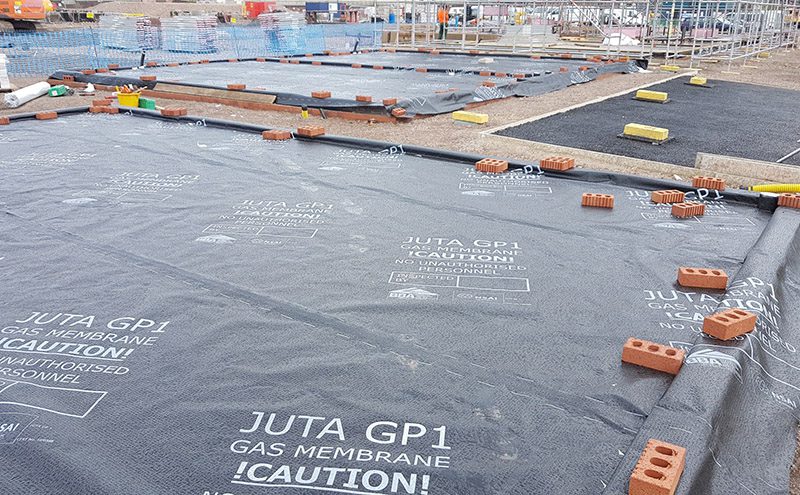
Deadly radon claims thousands of lives every year. Installing gas barrier membranes can help protect homes and save lives
Radon gas claims thousands of victims in the UK every year. The naturally-occurring gas is a known cause of lung cancer, which according to the NHS is responsible for 1,100 deaths annually.
What is radon gas?
Radon is formed by the decay of small amounts of uranium that occur naturally in all rocks and soils. Colourless and odourless, radon is the single biggest source of radiation exposure to the UK population in both homes and workplaces, easily exceeding exposure from nuclear power stations or hospital scans and X-rays.
Certain areas of the UK have higher concentrations of radon, including Devon and Cornwall; the Yorkshire Dales; a swathe of countryside through the Midlands; and parts of Wales, Scotland and Northern Ireland. The government has produced an interactive map so that homeowners and developers can check if properties are in a high radon concentration area. Between 500,000 and 600,000 homes in the UK are currently designated at risk of radon exposure.
Currently, only new homes built in high radon areas are required to have sealed membranes to prevent radon leaching into the home. However, the Health Protection Agency (HPA) has proposed a radical nationwide policy to install sealed membranes in all new homes, regardless of where they’re built. This is because lung cancers due to radon occur even in areas with low recorded levels. Risks are calculated based on a lifetime in a home rather than levels of exposure. The HPA believes its proposal to install membranes, which costs around £100 per home, would save around 1,000 lives over 20 years.
How gas barrier membranes help
Installing a gas barrier membrane at the ground level of a property blocks dangerous ground gases, including radon, carbon dioxide and methane, all of which could otherwise seep from the soil into the interior of the building.
Manufactured using highly durable materials, gas barrier membranes are installed in much the same way as damp-proof membranes, but tend to be fitted by workers who have the skill and experience to deliver complex projects of this nature.
“People are far more aware of radon gas exposure and its impact on health these days,” said Wendi O’Toole, from UK water management specialist Scott Parnell.
“It’s essential to provide a solution to developers and builders that delivers the most effective protection against radon and other ground gases. We use a gas barrier with multi-layered, low density polyethylene membrane, reinforced with a polypropylene-reinforcing grid and with an integral aluminium foil.
“The membrane is specifically designed and manufactured to provide the highest-quality protection system against radon, methane, carbon dioxide, volatile organic compounds, hydrocarbon vapours, air and moisture.
“We offer a supply and installation service. Additionally, we can source an independent validator should this be required as part of a gas barrier project.”
Home testing
Homeowners can find out whether their home is likely to be above the action level for radon – set at 200 becquerels per cubic metre. An address search costs £3.90, while a test to establish the extent of the risk is also available from Public Health England. Its measurement pack costs £50.40 and includes two detectors, which must be placed in the home for three months before being sent for assessment.






